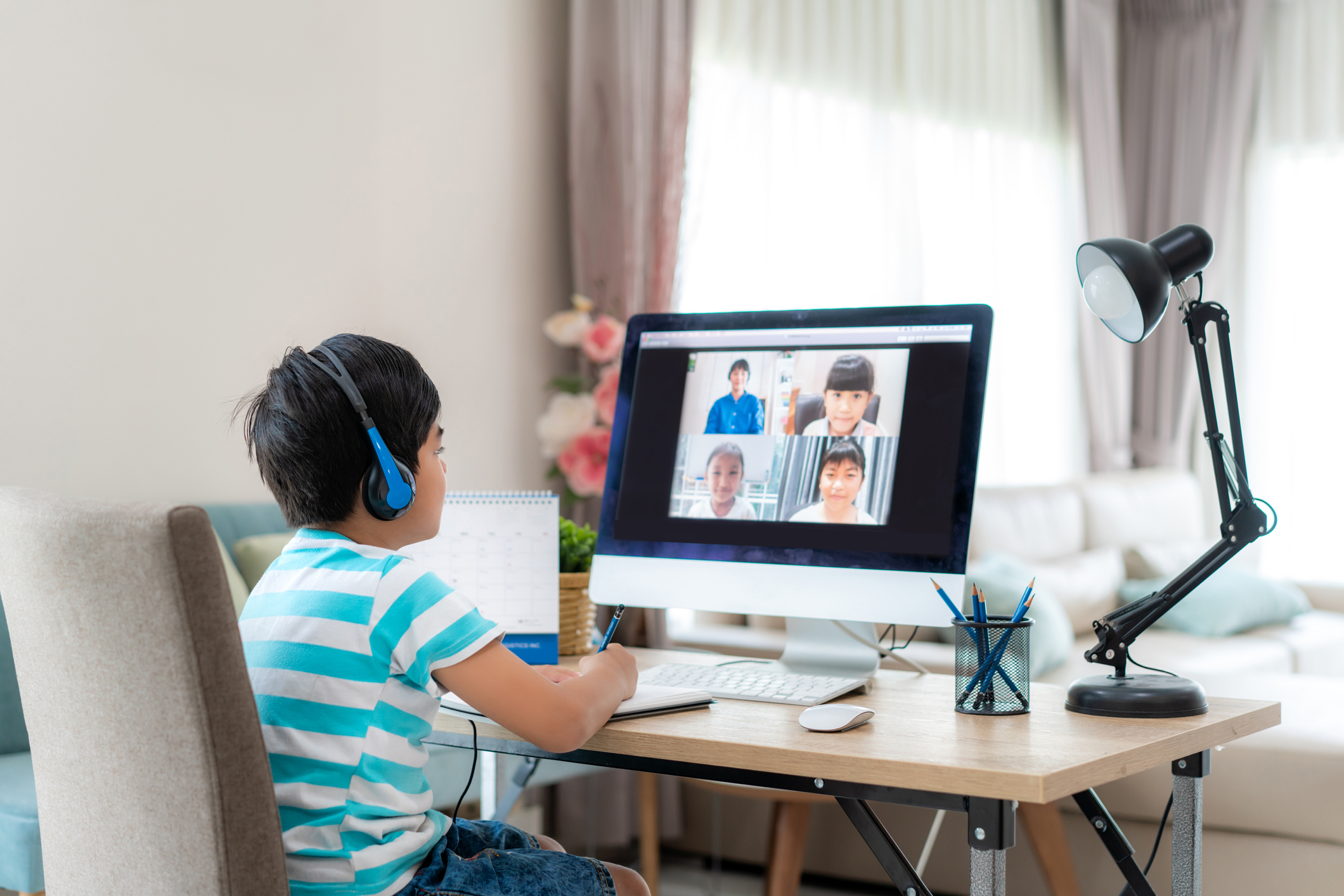You’ve read the various headlines over the years about how screens are destroying society. Well, there’s nothing like a global pandemic to put things into the proper perspective, right? I think most of us feel more grateful than ever to have the many benefits that our screens provide.
Can you imagine what life would be like right now without our screens? Thanks to our screens, during this difficult time, we can:
- Access the latest news and information.
- Keep in contact with our friends and loved ones through tools like FaceTime and Zoom.
- Work from home (well, many of us).
- Kids, teens, and college students can continue their education in virtual classrooms.
- Have endless options for entertainment through streaming content and video games.
A History of Moral Panics
Every new form of media, from books and newspapers to the radio and the telephone, to television and video games, has had naysayers and social critics predicting the demise of civilization. “We will soon be nothing but transparent heaps of jelly to each other,” lamented a London journalist in 1897 in his critique of the telephone.
Yet, by most metrics (the current pandemic notwithstanding), the world has improved over time, not gotten worse. Our scientific, technological, and medical advances have helped increase longevity, decrease world hunger, and improve the quality of our lives. Screens, and the technologies that power them, are one of the reasons why the world has improved over time.
There Are Downsides to Any New Technology or Media
This isn’t to say screens are without any downsides, of course. There are real concerns and harms caused that are mediated by screens, such as cyberbullying/trolling, kids accessing pornography, phubbing one another, FOMO, and losing sleep because we are on our screens too much. Yet, such downsides are to be expected.
Just as we can use fire to cook our food or keep us warm, it can also burn houses to the ground. We can’t have automobiles without having car accidents. We don’t abandon new technologies because they can cause certain types of harm. We need to learn to use them more mindfully to reduce such harm. We don’t throw out the baby with the bathwater.
Practicing Physical, Not Social, Distancing
What we are learning from this pandemic, though, is how much the positives of our screens outweigh the negatives. Perhaps nowhere is this more evident than in our social lives. When it comes to maintaining our social connections in this time of the COVID-19 pandemic, screens are virtually saving our lives.
We are told to practice “social distancing” to help slow the spread of the COVID-19 virus. While we do need to keep our distance, the “social” part of the term is a bit of misnomer. Really, what we need to do is practice physical, not social, distancing. We are social creatures, and we truly need our social connections to survive and thrive.
Here’s the reality that we know to be true: If it weren’t for our screens, we’d all be in real trouble right now when it comes to meeting our social needs. Through social media, texting, FaceTime, Zoom, Skype, and so on, we are able to maintain those social connections in a way that just wasn’t possible in past generations.
Real-World Examples of Screen Socializing
If you would like to share your personal experiences of how you’ve used screens to meet your social needs during these troubling times, please do. Here are some of the ways that screens are facilitating social connections that I’ve experienced or witnessed:
Video Therapy
As a psychologist, I’m quite grateful that I can still see clients through video therapy (sometimes called telehealth or teletherapy). All of my professional colleagues in and around Austin have switched to video therapy, and most of them report that it’s working out fairly well overall, even for groups. Although I personally prefer in-person therapy sessions, the practical advantages of video therapy can’t be underestimated. Even without a pandemic, driving to therapy sessions is quite challenging and even prohibitive for many clients. When this pandemic is over, I can imagine that many therapists will continue to offer video sessions as part of their repertoire.
Social Media
Through social media, particularly Facebook and Twitter, I am connecting with more friends and colleagues than usual. I think we are all trying to fill the social void that we are currently experiencing. I can only imagine that being quarantined during the Spanish Flu pandemic of 1918 would have been particularly difficult because of social isolation. There’s something comforting about reaching out to others through social media during this pandemic. We are all trying to help each other make it through this. I’m convinced that the “togetherness” we experience through social media can only help.
Group Video Meetings
I’ve participated in a number of group meetings via video, mostly using Zoom or Google Hangouts. Again, these have worked fairly well. I have been meeting regularly with a theological discussion group for several years now, and our next meeting will be through Zoom. We will see how that goes, but I’m looking forward to it. I prefer it to the alternative, which is, ah… not meeting.
Online Gaming
I’ve been playing more video games in recent years. They definitely add some extra fun to life. A wonderful aspect of video games is the social part—whether in-person or online. For millions of players, video games create safe, enjoyable social spaces. In this time of COVID-19, what better way to spend time with your friends?
Years ago, I played an online role-playing game (RPG) Neverwinter Nights with my best friend, Tom, who lives in a different city (I’m in Austin, he’s in Houston). We had an exceptionally good time. It’s difficult to capture this with words, but it felt like we really went on an adventure together. Tom and I are about to start a new online RPG. Through the wonders of technology, we are about to enter a magical world and go on an epic adventure together. How awesome is that?
Skype Piano Lessons
Two of my sons are taking piano lessons, and I am as well! We’ve had to move those piano lessons to Skype. While I was skeptical at first, they worked pretty well! In fact, they worked so well that even after the pandemic, we will probably opt for any make-up lessons to be through Skype. The drive during traffic hours is sometimes a beast, which makes Skype piano lessons an appealing alternative.
Virtual Dates
My 16-year-old son and his girlfriend of several months are using technology to spend quality time with one another. The other night, my son and his girlfriend connected on FaceTime. He placed the phone on the couch facing the TV. Apparently, she had done the same thing. Then, they put on the same show on Netflix Party and watched it “together.” They chatted with one another as they watched the show and seemed to have a lovely time. While it wasn’t the same as being in-person, their virtual date worked well enough!
Virtual Happy Hours
I have not tried this myself, but I’ve heard from a number of folks who participated in virtual happy hours. Most folks used Google Hangouts or Zoom to share a drink with friends. A client of mine who really enjoys his time with friends in-person said he and his friends recently tried a virtual happy hour. I asked him how it went. He said, “It went pretty well. It’s more fun to have a happy hour in-person, but it was better than not having one.” Well said!
A New Appreciation for In-Person Connections
I’m the type of person who is always looking for silver linings. As a kid, my mother would often advise me, “If life gives you a lemon, make lemonade.” While this is a challenge, we can still squeeze at least some lemonade out of this pandemic lemon.
To be clear, we don’t deny that this pandemic is causing much pain and suffering. It surely is. Yet, many of us are coming to a similar realization. While screens are wonderful in so many respects, especially at helping us maintain connections during this time of physical distancing, they can’t totally replace our in-person connections. Being forced to practice physical separation from one another serves as a reminder that there is something special, almost magical, about our in-person social connections.
Screens provide many options for us to connect with one another. Perhaps now more than ever, this pandemic has shown us how vital screens are to maintaining our social connections. Funny enough, at the same time, they are also teaching us that screens cannot totally replace our in-person social connections.
Here’s the wonderful news. We are not forced to choose. We can reap the benefits of our screens and our in-person social connections. We just have to put those in-person social connections on hold until this pandemic is over. I’m ready for that happy hour!

